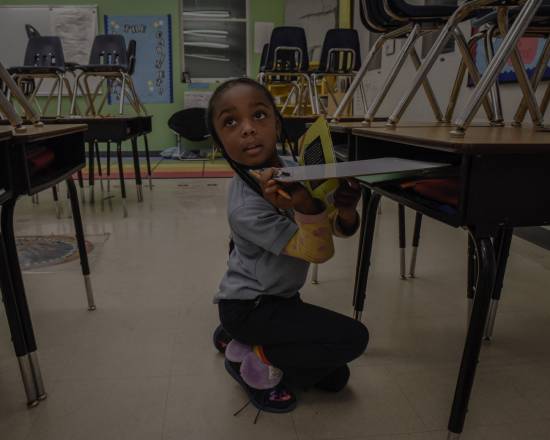US: Back-to-school gun violence was highest on record. Active shooter drills may not be the answer.
Students adjusting to another school year disrupted by COVID-19 also face a different kind of public-health threat: record gun violence.
Between Aug.1 and Sept. 15, at least 30 instances of gunfire occurred on U.S. school grounds, according to data from the nonprofit Everytown for Gun Safety. The shootings killed five people and wounded another 23.
That marks the highest number of campus shootings in a back-to-school season since Everytown began tracking data in 2013. All in all, there have been nearly twice as many shootings in schools so far this fall compared to pre-pandemic levels. From the beginning of August through the first week of October at least 36 shootings wreaked havoc in schools in 21 states, according to Gun Violence Archive data. Over the same time period from 2016 to 2019, the country averaged 17 shootings in schools.
Such violence has left countless other witnesses and community members traumatized – all at a time when students and educators are already struggling emotionally. In some cases, schools’ responses may unintentionally make the trauma worse.
Families depart a performing arts center Wednesday in Mansfield, Texas, after being united with students from Timberview High School. Police in Texas arrested a student suspected of opening fire during a fight at the Arlington-area high school, leaving four people injured.More
Last week, four people were injured in a shooting at a school in Arlington, Texas. The accused perpetrator, charged with opening fire during a fight at the high school, was a fellow student who’d reportedly been bullied.
The pandemic has fueled a mental-health crisis across the country. Schools are grappling with heightened levels of depression and anxiety among both students and staff. Frank Kitzerow, the police chief for Florida’s Palm Beach County School District, points to a possible correlation between this trend and the increase in school-based gun violence.
“Schools are a microcosm of their communities,” Kitzerow said, citing FBI data showing an uptick in homicides. “It should be a clue and a wake-up call for us. … What we see in the communities is coming into our schools.”
On Sept. 1, the eighth day of classes, one student fatally shot another inside a Winston-Salem, North Carolina, high school, causing campuses throughout the district to lock down for hours. Recovery from the shooting has been “long and difficult,” Laurie Schaefer, a teacher at Mount Tabor High School, told USA TODAY. And the school’s healing process became particularly difficult when a gun was found in a student's backpack late last month and another in a nearby middle school the following week, she said.
Active shooter drills could make trauma worse
Incidents like these are a reminder that schools ought to explore a suite of preventative measures that prioritize mental health, according to Kitzerow. Yet reactive, potentially traumatizing practices such as active shooter drills have grown in popularity.
In the most extreme version of these drills, the school stages an active shooting unannounced, leading students to believe they’re actually under attack. Research shows an association between the drills and significant, lasting increases in depression, stress and anxiety among students, parents and educators.
“As a high-school student, when we go through these drills, they’re really traumatizing – it’s hard for us to adapt to learning afterwards, for us to sit through the drill,” said Peren Tiemann, a volunteer with Lakeland High School Students Demand Action, a gun-control advocacy group in Oregon.
In Tiemann’s experience, miscommunication surrounding such drills can leave students feeling helpless and confused. Once her school staged a drill in which the hypothetical shooter was supposed to be off school grounds, but she and her peers were under the impression that person was on campus. Chaos ensued, she said, with different classrooms responding in different ways.
Tiemann has led efforts at her school to change its safety practices. Among the reforms: removing simulation-based drills, improving communication and ensuring students have a “breathing period” after a drill before resuming their learning.
Such reforms are especially urgent now, Tiemann said. “For so many of us, going back to school added a whole other level of stress,” she said. “Now, it’s possible to have school at home. … When we have these drills, it just reminds so many of (us) that there could have been another option if we had just stayed home.”
For Justin Funez, a University of Chicago student and volunteer with Students Demand Action, an organization that works to end gun violence, reforms should also extend beyond school grounds. Most of the gun violence that children experience occurs off-campus – and that’s particularly true in low-income communities, where students often learn in classrooms with the sounds of sirens in the background.
“How can you do your homework if you’re worried about that?” Funez posed. “How many clubs can you actually participate in if you know you have to be home before” the gunfire erupts?
USA TODAY.


